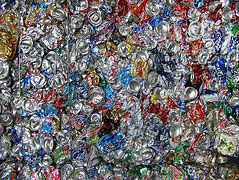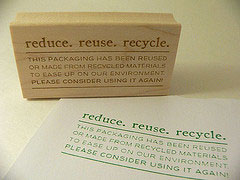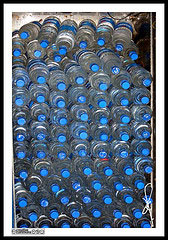Green Speaking
Did you know?
- The US is a source for 25% of the world’s green house gas emissions?
- The average American family uses 102,000 gallons of water
- Each day 5 billion gallons of potable water is used just to flush toilets! (10,000 tons per day!) However, the detergent that is used to clean cloth diapers can be just as harmful, more water, energy and detergent are used to clean them. Washing in bulk, line drying and choosing diapers that are biodegradable and chemical free is the best bet.
- More than 18 billion disposable diapers are thrown away each year.
- The average American’s ecological footprint (the area of land required to sustain consumption and waste) is more than 25 acres which is 5 times more than what is sustainable globally.
- One third of the trash tossed in the US is a packaging material. Americans toss more that 75 million tons of packaging and containers. (that’s 532 pounds per person into landfills each year) Sad thing is, less than 40% is recycled.
- The US transportation system is the largest in the world and accounts for 1/3 of our greenhouse gas emissions. (more that 515 million tons of CO2 each year or 70% of the oil consumed in the US and more that we produce as a nation)
Stats around green and Recycling – From the EPA:

- In 1999, recycling and composting activities prevented about 64 million tons of material from ending up in landfills and incinerators. Today, this country recycles 32.5 percent of its waste, a rate that has almost doubled during the past 15 years.
- While recycling has grown in general, recycling of specific materials has grown even more drastically: 52 percent of all paper, 31 percent of all plastic soft drink bottles, 45 percent of all aluminum beer and soft drink cans, 63 percent of all steel packaging, and 67 percent of all major appliances are now recycled.
- Twenty years ago, only one curbside recycling program existed in the United States, which collected several materials at the curb. By 2006, about 8,660 curbside programs had sprouted up across the nation. As of 2005, about 500 materials recovery facilities had been established to process the collected materials.
Your Role Lifestyle changes – live as simply as possible
Lifestyle changes – live as simply as possible
These changes may seem small and simple, but when they are combined with the efforts of others, the impact is multiplied and successful!
- Recycle household goods (click here for EPA recycling guidelines on recycling)
- Turn off noisy or unneeded appliances
- Purchase recycled products
- Start composting - Composting yard and kitchen waste can reduce the amount of household trash by up to 70%.
- Use filtered water instead of bottled water
- Recycle cameras, computers and cell phones
- Plant a tree to offset carbon dioxide contributions
- Choose cookware and utensils that are high quality so they do not have to be replaced often
- Eat natural foods rather than foods that are processed, packaged and require additional re-heating.
- Using a pressure cooker can reduce cooking times, and energy, by as much as 70%.
- Buy local as often as possible. Look for products with minimal packaging.
- Buy in bulk and cook in bulk; just make sure you can consume what you purchase and produce!
- Take your own bags to the grocery store or recycle the bags you use.
- Carpool, shop together and share!
These changes may seem small and simple, but when they are combined with the efforts of others, the impact is multiplied and successful!
What this means to you – The extent that you participate in this green movement is personal preference. There are so many different ways to contribute to saving the planet. The more savvy you can be about products/services you use, the better.
Being a Smart Green Consumer
Greenwashing – What it means and how it effects you:

- What it means – it is a term that is used to describe the act of misleading consumers regarding the environmental practices of a company or the environmental benefits of a product or service. The term Green sheen has similarly been used to describe organizations which attempt to appear that they are adopting practices beneficial to the environment. The term came into use around 1990. The term is generally used when significantly more money or time has been spent advertising being green (that is, operating with consideration for the environment), rather than spending resources on environmentally sound practices Environmentalists often use greenwashing to describe the actions of energy companies, which are traditionally the largest polluters.
- How it affects you - This is often portrayed by changing the name or label of a product, to give the feeling of nature, for example putting an image of a forest on a bottle of harmful chemicals.
- How you can avoid it – You can very simply read the ingredients on the back of the bottle to see if harmful ingredients are listed. If you are feeling more ambitious, you can check the manufacturers website for more information and even contact them to ask questions directly.



